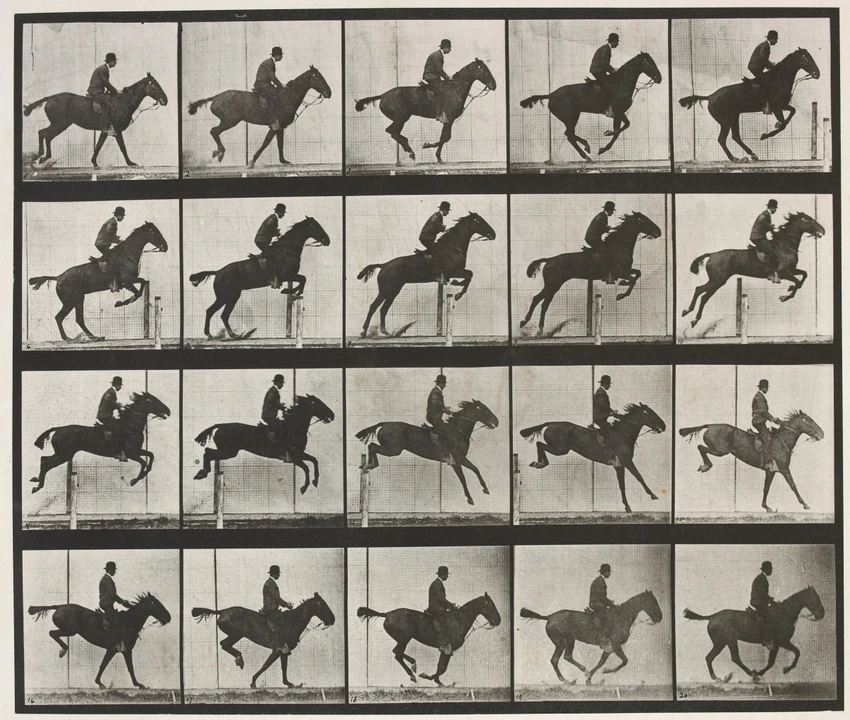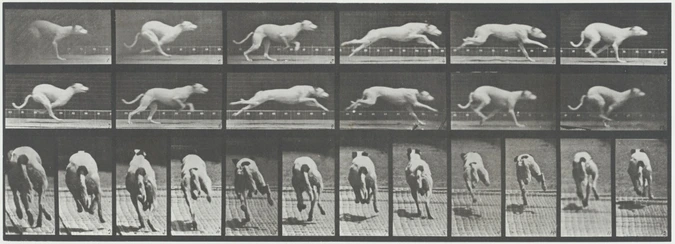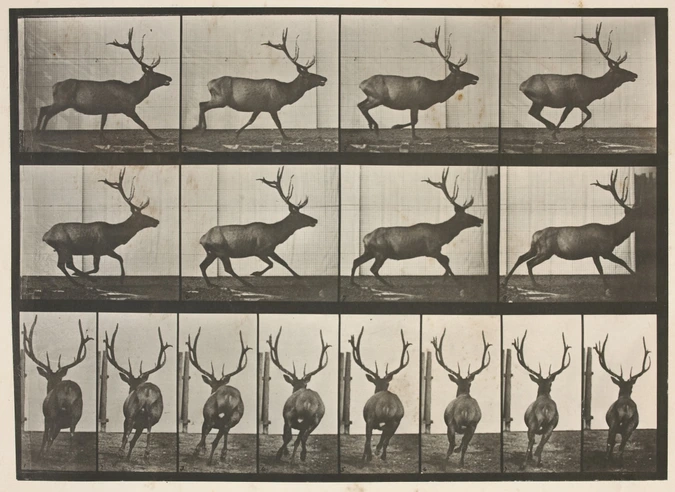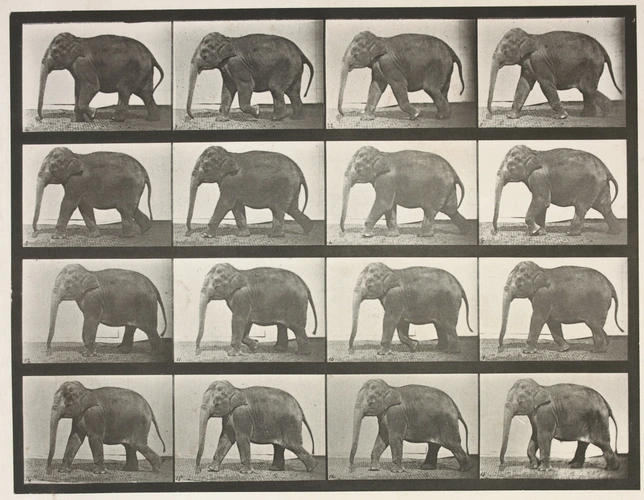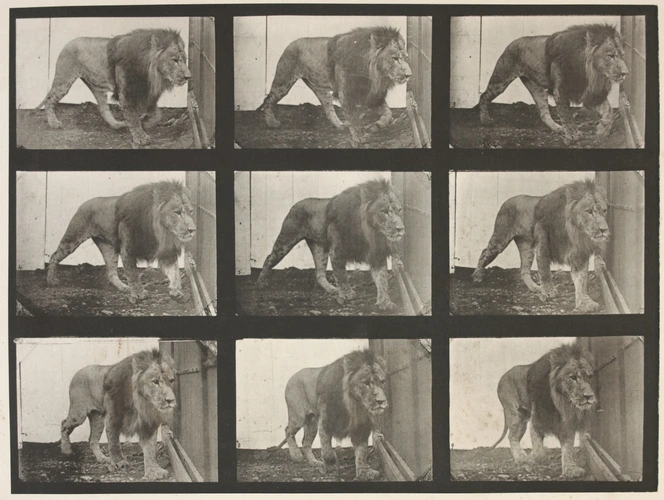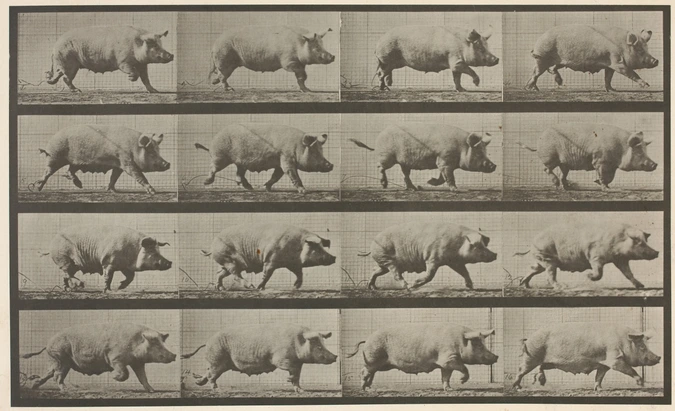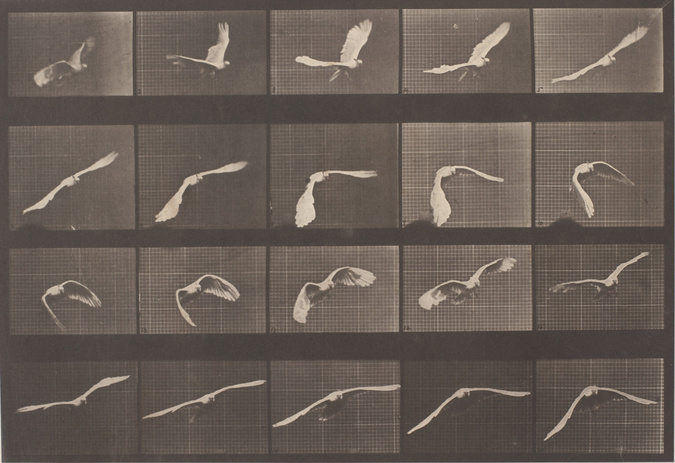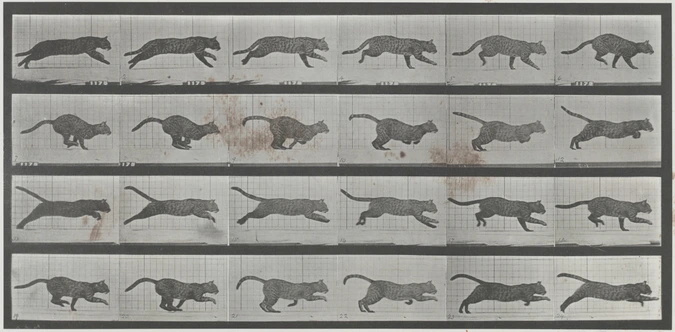Saut d'obstacle, cheval noir
In 1887, the Englishman Eadweard Muybridge brought out eleven volumes of photographs entitled Animal Locomotion. Each plate shows views of the same subject in sequential phases of one movement. More than five hundred of these plates have human subjects, about a hundred are of horses at different paces, and a hundred and twenty are of various animals: deer, elephants, dogs, pigs, bulls, parrots, lions and other cats.
Some ten years previously, at the instigation of Leland Stanford, a railway magnate and former governor of California, Muybridge had been the first photographer to analyse living creatures in motion. Passionate about horses, Stanford asked Muybridge to use photography to confirm the graphic works of Etienne-Jules Marey on the horse's gallop, then a subject of debate. The Animal Locomotion plates were produced for the University of Philadelphia where the painter Thomas Eakins (1844-1916), who was himself interested in the representation of movement, had invited Muybridge to come and work.
These images, made possible by a series of cameras with an automatic release, created a great stir in Europe and the United States. An important American magazine, Scientific American, dedicated an article to them in October 1878, and in December that year; other plates were reproduced in the French magazine La Nature. Artists, as well as scientists, were greatly influenced by these snapshots: Eakins clearly so, but also, and more importantly, the French artists Ernest Meissonier (1815-1891) and Edgar Degas (1834-1917). Degas in particular, in various versions of Rearing Horse, recaptured the positions of the animal fixed by Muybridge
